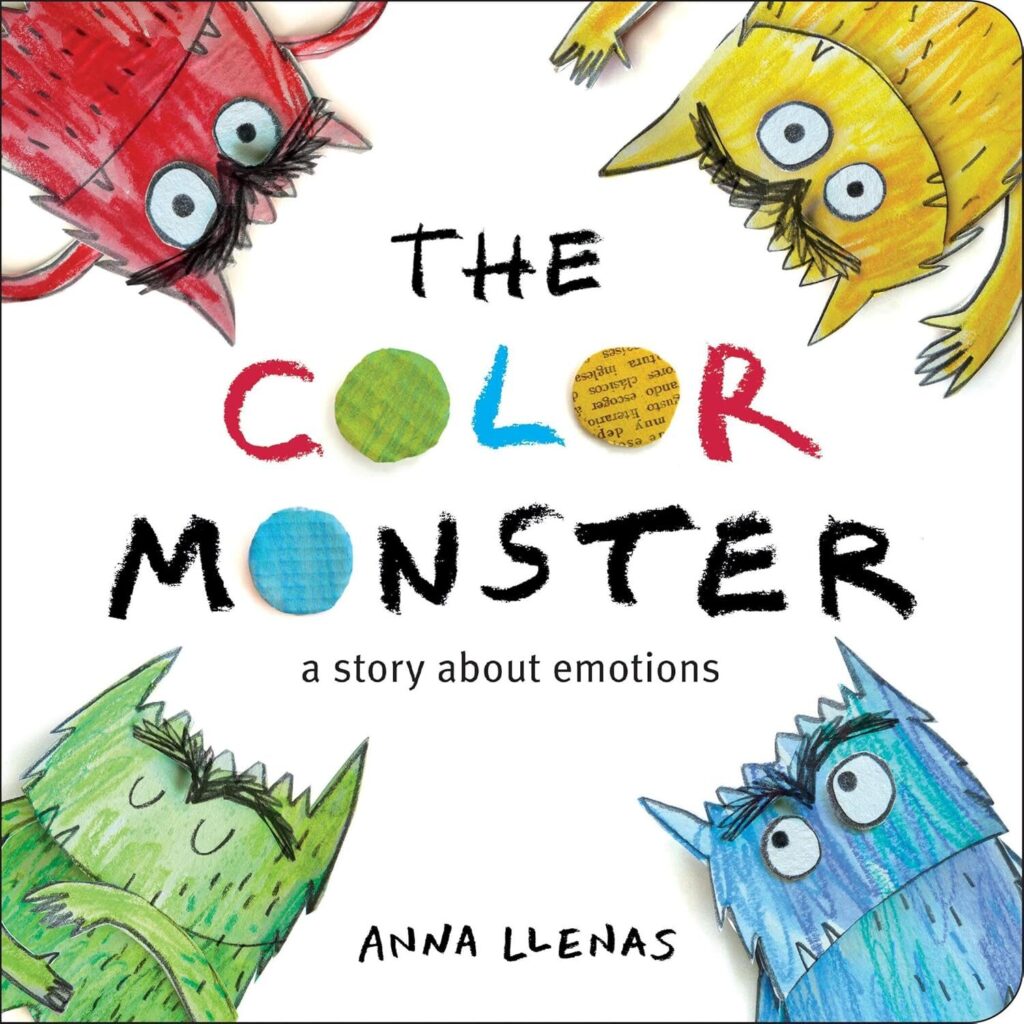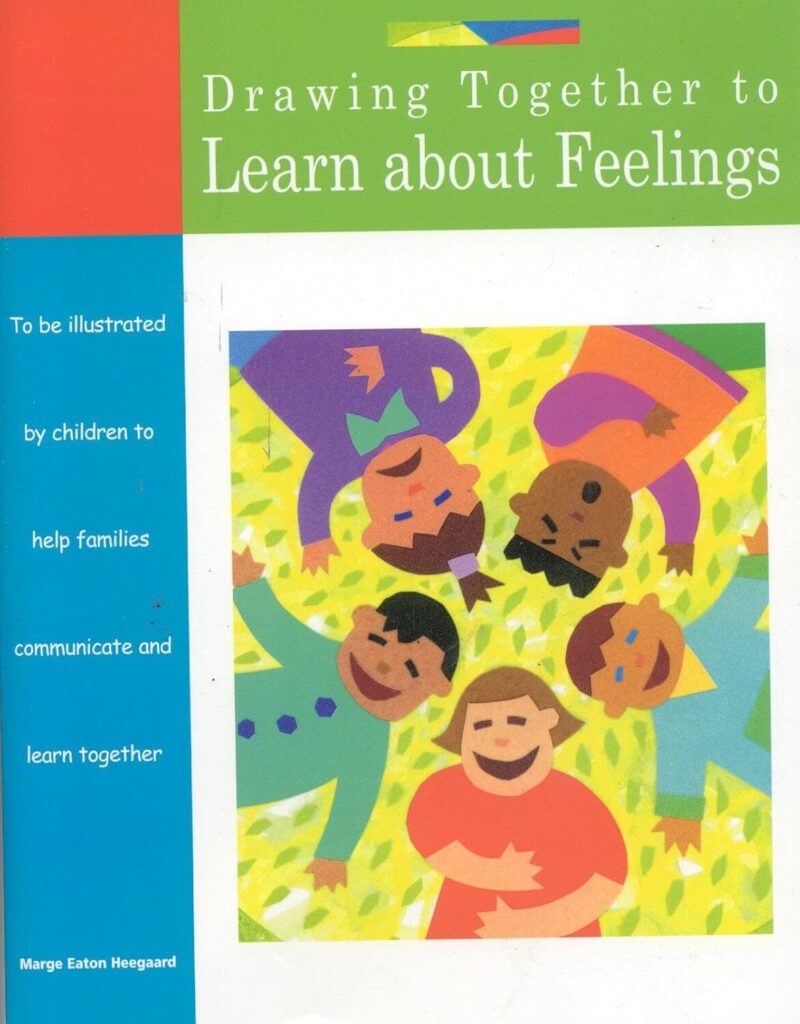Does your child struggle to share their feelings? Do they respond with “I don’t know” or “I’m fine” when you ask about their day?
I do! My daughter sometimes would say “I don’t remember” to a lot of things I ask her. Earlier, I used to get irritated listening to the same answer. Then, I realised she struggled to share her emotions and needed help.
As parents, we want to build a strong emotional connection with our children, but sometimes, it feels like they are holding back their thoughts and emotions. The good news? With the right approach, you can help your child feel safe and confident in expressing their feelings. This is what I did with my daughter. She has started sharing better, if not wholly.
Click HERE to download a Free PDF for the Feelings Activity Book for your child.

In this post, we’ll explore 5 powerful tips to encourage open communication and strengthen your bond with your child.
1. Create a Judgment-Free Space 🏡💬
Children need to feel safe and supported before they can open up. If they fear being judged, scolded, or ignored, they may choose to stay silent instead of sharing their emotions. At a young age, they will not understand that they are being judged. But as they grow up, say 9 or 10 years of age, they will start to understand and get distant from you. They will hide things they would have told you if you did not judge them or scold them. This would create even more problems.
🔹 Avoid phrases like:
❌ “Stop crying, it’s not a big deal.” Every emotion is a powerful emotion. It can be happiness, sadness or even anger. Hug the child when the child is crying. Come down to their level. Talk to them. Ask them the reason for crying. Help them solve the problem. Never say it is not a big deal.
It is often seen in our culture that boys are regarded as strong and crying as weakness. Never tell your male child not to cry just because he is a boy. Boys, too, have feelings. Such men grow up to be emotionally weak. Never say “Stop crying like a girl.” You are disrespecting both genders.
❌ “Why are you always so dramatic?”
Don’t assume a child’s feelings to be a drama. They would feel hurt and stop sharing with you the next time. Imagine you didn’t like something that happened to you, and when you tell it to your partner, he or she says, “Stop overreacting.” How would you feel? You would think before sharing the next time, right?
🔹 Instead, try saying:
✅ “I see that you’re upset. I’m here to listen.” Listen to whatever they say without interrupting and judging them. Hug them, and console them. Tell them you are always there for them.
✅ “It’s okay to feel that way. Do you want to talk about it?” Maybe not instantly, but eventually they will talk to you about it.
💡 Quick Tip:
Even if you don’t fully understand their emotions, let them know that their feelings are valid and that they can talk to you without fear of criticism.
2. Use Open-Ended Questions ❓💡
Sometimes, kids don’t open up because we ask yes/no questions that don’t encourage deeper conversations.
Instead of asking, “Did you have a good day?”, try:
🔹 “What was the best part of your day?”
🔹 “Did anything nice and funny happen today?”
🔹 “If today had a colour, what would it be and why?”
This helps the child to answer a little more deeply and think about the things you just asked. It will make them more interested in answering the questions and sharing their thoughts. They will be more involved and happy. And from next time, maybe they will start sharing on their own.
💡 Quick Tip:
If your child hesitates to answer, give them time. A simple “I’m here whenever you want to talk” can help them feel more comfortable. You would be happy that the child will come to you in some time, when the emotions have settled, and the child is comfortable in sharing.
3. Lead by Example – Express Your Feelings ❤️🗣️
Children learn by watching us. If they see you talking about your emotions, they will feel more comfortable doing the same.
Instead of bottling up your feelings, try saying:
✔️ “I felt a little frustrated today, but taking deep breaths helped me feel better.” This will help them understand that getting frustrated is not bad. It is just a feeling. Also, taking deep breaths can help you relieve stress and calm down. Next time, when it happens to them, they will try to do the same. Maybe you are not there to witness it, but you helped them learn it.
✔️ “I was really happy when I saw your drawing today! It made my day!” Show the child that you are happy for what they have done. Not only will it show appreciation, but they will also learn to express their positive feelings. The next time they see their friends doing something nice, they will appreciate them too.
💡 Quick Tip:
By showing them that it’s normal to talk about emotions, you make it easier for them to do the same. The next time they will be more comfortable to show all their emotions, whether it is positive or negative.
4. Make Talking Feel Natural & Fun 🎨🚶♂️
Not all kids feel comfortable talking face-to-face about their emotions. Sometimes, the best conversations happen during activities when there’s less pressure.
My husband is more patient than I am, so he will not force our daughter to express her feelings right away. When they are engaged in an activity, say art and craft, or when they are just having their dinner, he will ask her simple questions about her day. And you will be surprised to know she will tell him most of the things she did, which earlier she said she doesn’t remember.
Sometimes he doesn’t even need to ask, and she will relate or remember things and tell. They both enjoy such calm, non-judging conversations.
🔹 Try these side-by-side activities to encourage sharing:
🎨 Drawing or painting together – Ask them to draw how they feel.
🚶♂️ Going for a walk – Fresh air makes conversations flow naturally.
🎮 Playing a game – Casual chat during playtime feels more comfortable.
💡 Quick Tip:
If they don’t feel like talking right away, don’t push. Give them space, and they’ll open up when they’re ready. Be patient.
5. Use Books & Stories to Talk About Feelings 📚💭
Sometimes, kids struggle to find the right words to describe their emotions. Books, stories, and role-playing can help them understand and express feelings.
📖 Read books about emotions – Ask, “How do you think this character feels?” They will slowly start opening up.
🎭 Create stories together – Let them invent a story in which a character feels sad, happy, or frustrated. Ask them to draw it or write it down. This will help them express themselves better.
📝 Use emotion charts – Show different facial expressions and ask, “Which one matches how you feel today?” They can point at it and express.
💡 Quick Tip:
This approach works especially well for younger kids who may not have the vocabulary to express their emotions yet.
Click HERE to download a Free PDF for the Feelings Activity Book for your child.
Here are some books with amazing reviews on feelings and emotions that you can buy for your child.




Drawing Together to Learn about Feelings


The last one is my personal favourite!!
Final Thoughts for Helping Your Children Share Their Feelings
Helping your child share their feelings takes time, patience, and consistency. The more emotionally safe and supported they feel, the more likely they will be to open up and communicate with you. Never force them when they are not ready, or you will lose their trust.
🔹 Be patient – Don’t force them to talk. They will talk when they are ready. Just follow the above steps.
🔹 Validate their emotions – Let them know that all feelings are okay. Whether they are angry or calm, happy or sad, everything is normal, as all of these are emotions. Just guide them on how to move from the negative emotions to the positive ones.
🔹 Lead by example – Show them how to express emotions healthily. They do what they see.
💬 What’s one thing you do to help your child express their emotions? Share your thoughts in the comments below! 👇




